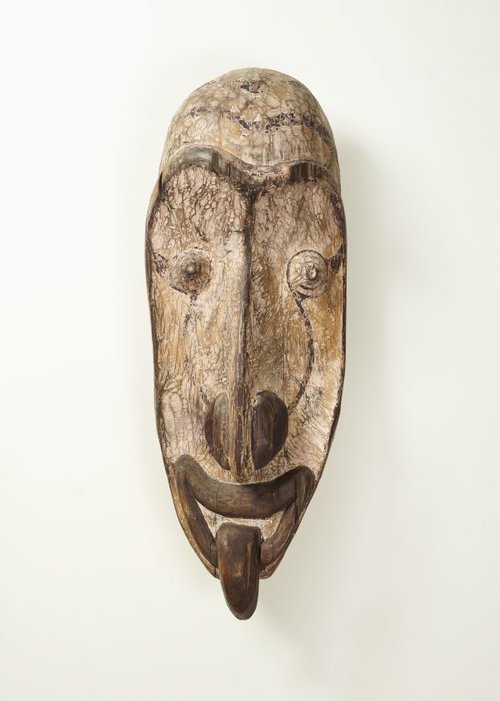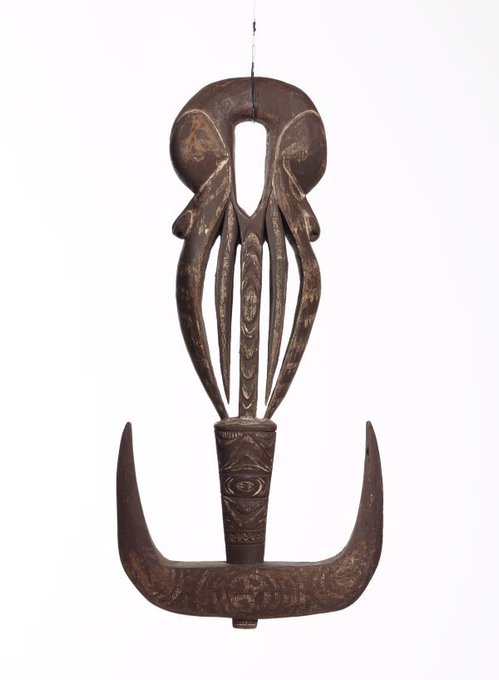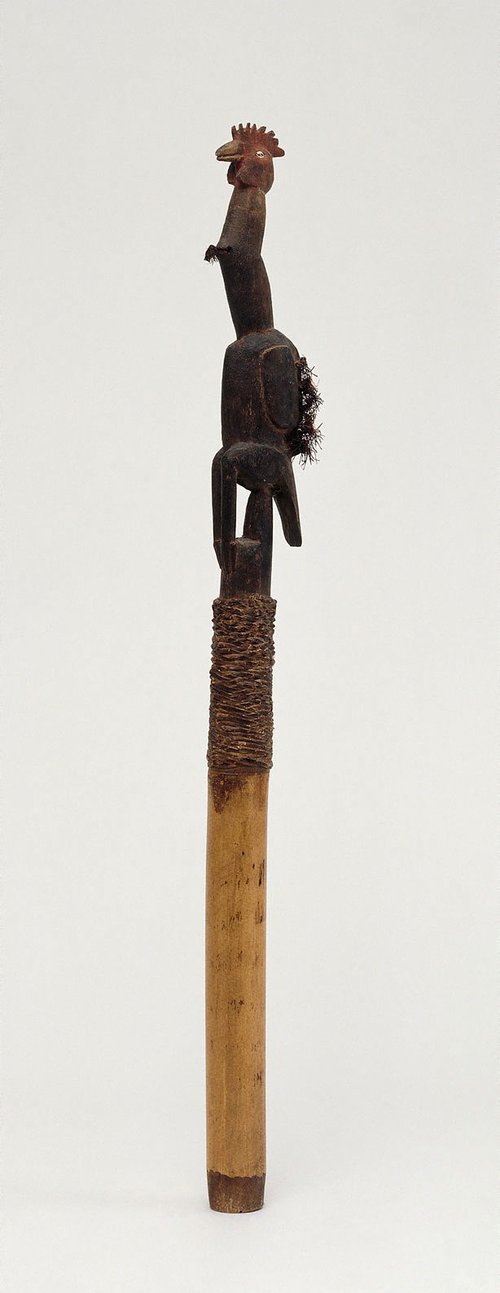Title
Konguwavi (gable finial of men's house)
mid 20th century
collected 1961
Artist
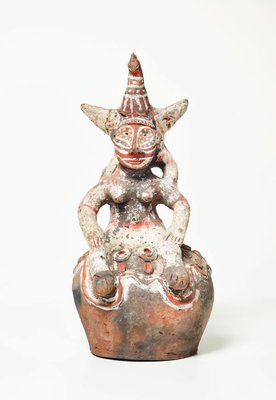
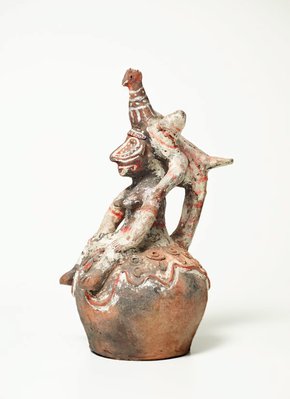


-
Details
- Other Titles
- Roof ornament - female figure surmounted by a bird
Roof ridge ornanament
Roof finial with female figure surmounted by a bird - Place where the work was made
-
Aibom Village
→
Chambri Lake
→
Middle Sepik River
→
East Sepik Province
→
Papua New Guinea
- Cultural origin
- Iatmul people
- Dates
- mid 20th century
collected 1961 - Media categories
- Ceramic , Sculpture
- Materials used
- earthenware, modelled, red, white and black natural pigments
- Dimensions
- 43.2 x 19.0 x 29.0 cm
- Credit
- Gift of Stan Moriarty 1968
- Location
- Not on display
- Accession number
- IA1.1968
- Copyright
- Artist information
-
Iatmul people
Works in the collection
- Share
-
-
About
Aibom is one of the most important pottery manufacturing villages in the Sepik, where fire hearths, bowls, sago jars and gable ornaments are still traded across the region. Historically, pots were made by women, with decorative modelling undertaken by men. Today women both make and decorate pottery.
According to Alexia Kinjimali of Aibom, this 'konguwavi' (gable finial) depicts Kolimangge, the 'mother of all potters', who had the ability to conjure pots with her creative power alone. Kolimangge fled her husband and her homeland of Mavimbit, and hid on Aibom mountain. However, a man from Manggesauen found and assaulted her, and Kolimangge was turned to stone. Since then, women must make pots by hand. The rock forms of Kolimangge and her canoe remain on Aibom mountain to this day.
[entry from Exhibition Guide for 'Melanesian art: redux', 2018, cat no 31]
-
Exhibition history
Shown in 2 exhibitions
Aboriginal and Melanesian art, Art Gallery of New South Wales, Sydney, 19 Oct 1974 -
Melanesian art: redux, Art Gallery of New South Wales, Sydney, 17 Nov 2018–17 Feb 2019
-
Bibliography
Referenced in 3 publications
-
Hal Missingham (Editor), Art Gallery of New South Wales Quarterly, Sydney, Apr 1969, front cover (illus.), 454.
-
Tony Tuckson, Aboriginal and Melanesian art, Sydney, 1973, 45. cat.no. 75
-
Editor Unknown (Editor), Art Gallery of New South Wales Quarterly, Sydney, Apr 1972, (illus.).
-


